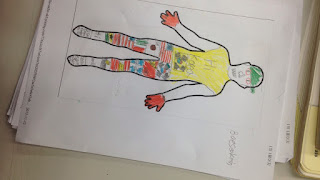For the past two years my teaching has mostly been defined by rules. My students followed rules regarding how to sit,how to walk in a line, how to write, how to ask questions, how to speak. As their teacher, I was charged with just as many. There were strict expectations telling me how to write a lesson plan, how to instruct, how to incorporate the textbook, how to ask questions, how to speak.
In fact, at times I felt that my teaching and lesson content were so restricted that I lost sight of my own vision for learning in the first place. I began teaching because I believed whole-heartedly that educators could make a difference in the lives of students and communities but questioned what impact I could make given such narrow and confining circumstances.
I believe that good schools recognize the self-worth of their teachers, but more than that, their students, and operate on the premise of trust and appreciation for each member of the school community. Responsive schools recognize the wealth of experience and talent each individual holds, and then creates spaces for those gifts to be refined and expanded.
I'm happy to report that while I still need time to un-learn and re-learn and heal, I am invigorated every day in my Korean school. Given more autonomy, trust, and confidence as a teacher here has allowed me to be creative in the classroom again and I think the students and I are both reaping the benefits.
Here's a little bit of what we've been up to in my less-regulated classes lately!
1. International Clothing Design
My 3rd and 4th grade after-school classes are stoked about having pen-pals in NYC and so we're beginning a cultural comparison of Korea and the US. We started with clothing- after learning about some traditional American clothing and clothing of American immigrants from cultures around the world, students were asked to complete 1 of 2 tasks. They could either create a side to side comparison of Korean and American clothing (see: Jeans vs. Hanbok) or they could create a new set of clothing using ideas from the fashion we studied.
It was amazing to see the kids light up with creativity and as always, I was stunned by their talent.
Left:International pants and "Naver Man" Right: A Modern Hanbok and Korean leggings :-)
2. Food Combination Creations
My 1st and 2nd grade classes are so fun! Students are JUST learning English but there is a wide enough range of skills in the class so that strategic partnering and student leadership has allowed us to be very successful in learning. This week we studied food. I had originally planned what might have been a boring lesson reviewing food vocabulary and then drawing a favorite food. However, inspiration struck in the form of "Do you like broccoli?" a kid's ESL song that combines gross food combinations (broccoli ice-cream, donut soup) while teaching food words.
Thus, students sang the ever-hilarious Broccoli Ice-Cream song and then came up one by one to ask the class if they would like some other funny food combination. Each time, they had to practice asking "do you like ____" with the names of the foods they picked. Finally, they went wild with food combos of their own and labeled each!


She's actually happy.
3. Creatively Comparative
In 6th grade, we're working on comparatives like bigger, faster, and stronger. Though I use the textbook for a guideline, I'm given the freedom to go rouge when I think it's more fitting :-). So this week, we started with Daft Punk's "Harder, faster, stronger" song, and then after learning key expressions, played a Comparative Olympics game to practice. Students arm wrestled, raced, and thumb warred all over the place, giving them real-life opportunities to utilize the phrases "I'm faster than you," etc. with guided practice. We also worked on community building by silently lining up from tallest to shortest and then trying to say "I'm taller than ___ and I'm shorter than ____" for each person in line in under a minute! We didn't quite make the challenge but we had fun trying!
In the follow-up lesson, I recognized that students had a fairly good grasp of the key expressions so I added some cultural exchange elements to make the class more exciting and productive. After briefly talking about Native Americans in the US, I told students that we would read a Native American folk tale. I'm excited to say that I rewrote the story "The Heron and the Hummingbird" with comparative adjectives in a reader's theatre format! And so my students then read, rehearsed and performed the folk tale for their classmates. A difficult age group to please, I was happy to see them actively participating for the entire class period!
You can get my lesson materials here!






































